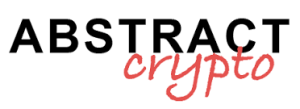The crypto world is not without challenges, and a persistent concern is the presence of pump and dump schemes.
In the annual Crypto Crime Report conducted by Chainalysis, a surprising revelation emerged in 2023: 54% of ERC-20 tokens listed on decentralized exchanges (DEX) showed suggestive patterns of pump and dump schemes.
However, these tokens accounted for only 1.3% of the total trading volume on DEXs. These interesting data push us to take a closer look at the intricate relationship between these tokens and potential market manipulation.
The rise of crypto pump and dump schemes in DeFi
Pump and dump schemes are a well-known tactic in the cryptocurrency space, where actors strategically inflate the price of a token before quickly selling their holdings with substantial profits, leaving unaware investors in trouble.
In an attempt to understand and combat these practices, Chainalysis researchers have analyzed chain data, focusing on the decentralized finance (DeFi) ecosystem of the Ethereum network.
The study, conducted between January and December 2023, revealed that during this period over 370,000 tokens were launched on Ethereum, with approximately 168,600 available on at least one DEX. To identify potential pump and dump candidates, researchers established three criteria, collectively known as “Criteria A”.
The tokens that meet these criteria include those purchased five times or more on DEX without any on-chain connection to major holders, tokens whose liquidity has been significantly drained by a single address, and tokens with a current liquidity of $300 or less.
Out of the total tokens launched, 24.4% (90,408 tokens) met the criterion A, which represents 53.6% of those listed on DEX. However, these tokens accounted for only 1.3% of the total trading volume on Ethereum DEX in 2023.
The decrease in monthly tokens that meet the A criteria since mid-2023 suggests a potential change in market dynamics.
Despite the significant number of tokens that meet the criteria, the study emphasizes that this methodology does not definitively prove that the tokens are involved in pump and dump schemes.
Instead, it serves as a starting point for further investigations, combining chain data with information outside the chain.
Profit calculation and case study
The study has also tried to quantify the profits made by actors who have launched tokens that meet criterion A.
Using a formula that takes into account the withdrawal and deposit of funds from DEX pools, as well as trading fees, researchers have estimated that these actors collectively made approximately $241.6 million in profit in 2023.
However, the average profit for each token that meets the criteria was only $2,672, which reflects the limited success of these potential pump and dump activities.
A noteworthy case study highlighted an address (Wallet 1) that launched 81 tokens that meet criterion A, generating an estimated profit of $830,000.
This case highlights the possibility for malicious individuals to exploit the system by repeatedly launching tokens using the same manipulation scheme.
The analysis of ERC-20 tokens on DEXs in 2023 raises questions about the prevalence and impact of pump and dump schemes in the decentralized finance space. Although the data suggests a substantial number of tokens exhibiting suspicious patterns, their overall contribution to trading volume remains minimal.
With the continuous evolution of the cryptocurrency landscape, it becomes imperative for regulatory authorities, market operators, and researchers to leverage chain data as a valuable tool to identify and investigate potential market manipulations, contributing to ongoing efforts to promote transparency and integrity in the cryptocurrency space.


